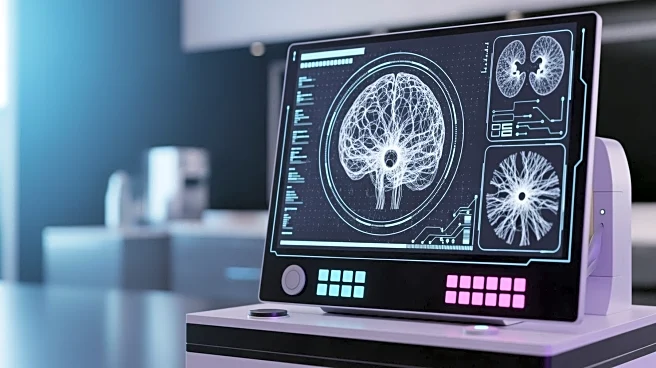What's Happening?
Recent advancements in 3D reconstruction technology have shown promise in diagnosing cognitive dysfunction by accurately measuring white matter hyperintensities (WMHs) in the brain. This study utilized an intelligent 3D reconstruction method to measure
WMH volumes, which are linked to cognitive decline and dementia. The technology employs T2 FLAIR sequences from cranial MR images, allowing for precise segmentation and volumetric measurement of WMHs. The study found a correlation between WMH volume and cognitive function, suggesting that WMH volume could serve as a potential risk marker for cognitive impairment. This method could improve early detection and intervention strategies for individuals at risk of developing cognitive dysfunction.
Why It's Important?
The development of this 3D reconstruction technology is significant as it offers a non-invasive, efficient way to identify individuals at risk of cognitive decline. By providing a quantitative marker for cognitive dysfunction, healthcare providers can better stratify risk and tailor interventions. This could lead to earlier diagnosis and treatment, potentially delaying the onset of dementia and reducing the burden on healthcare systems. The ability to monitor WMH volume changes over time also offers a dynamic approach to understanding and managing cognitive health, which is crucial given the aging population and increasing prevalence of dementia.
What's Next?
Future research will likely focus on refining the technology and expanding its application through multicenter studies to validate its effectiveness across diverse populations. There is also potential for integrating this technology with other imaging markers and clinical indicators to develop comprehensive prediction models for cognitive decline. As the technology advances, it may become a standard tool in routine cognitive assessments, enabling more personalized and effective healthcare strategies.
Beyond the Headlines
The ethical implications of using such advanced diagnostic tools include ensuring patient privacy and informed consent, particularly as these technologies become more integrated into clinical practice. Additionally, there is a need to address potential disparities in access to such technologies, ensuring that all populations can benefit from early detection and intervention strategies.













